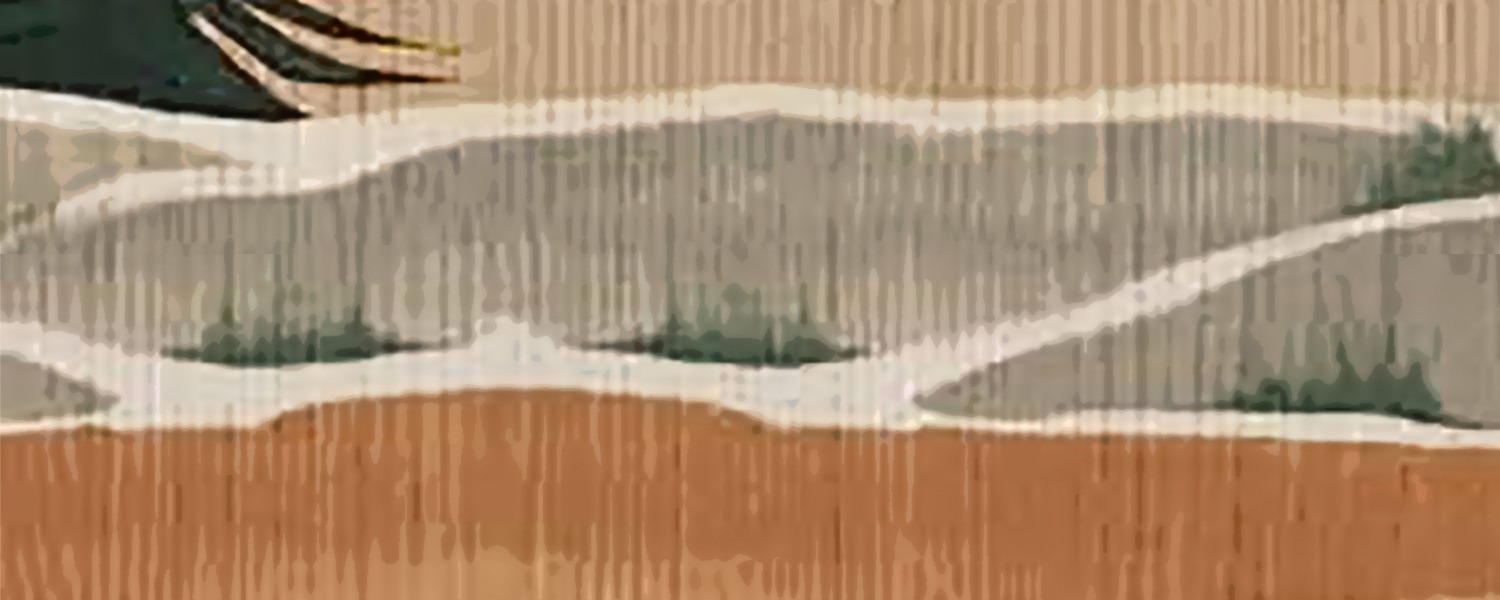Thursday, May 8, 2025 | Part 2
On April 17, 2025, the Government of Ontario introduced Bill 5, the dramatically-named Protect Ontario by Unleashing our Economy Act, 2025.1 In this blog series, we will be sharing our insights on some key aspects of what Bill 5 may mean for First Nations in Ontario. We have included links for each post in this series below, and will update this list as additional blog posts become available:
- Part 1: Bill 5: Risky Business in Ontario
- Part 2: Five Things to Know About the Repeal of the Endangered Species Act and the Introduction of the Species Conservation Act
- Part 3: Changes to Other Environmental and Regulatory Permitting Processes in Ontario
- Part 4: What is Bill 5 & C-5 and What Does it Mean for Indigenous Jurisdiction?
This post focuses on the amendment and later repeal of the Endangered Species Act (“ESA”), and the future implementation of its successor legislation, the Species Conservation Act (“SCA”). As we will discuss, the Ontario government is proposing to prioritize economic and development needs over conservation.
What does the Endangered Species Act currently do?
The purposes of the ESA are to identify and protect vulnerable species and habitat, and promote recovery and stewardship.2 It is the primary source of provincial protection for over 200 species which are at risk of disappearing from Ontario – birds, mammals, fish, plants and others.3 The ESA was introduced in 2007 to combat ongoing threats to biodiversity in the province, and though it has been weakened by successive amendments over time, it remains the cornerstone for protecting species at risk.
Protection decisions are independent
Under the current ESA, decisions are made by an independent body, based on scientific information, including Indigenous Traditional Knowledge (“ITK”). Ontario is then required to list these species in the regulation which protects them.4 One of the most important features of the current process is that it is insulated from political interference. It is an independent body, by design.5
Once a species is identified, the ESA provides protections related to their conservation and recovery based on how they are classified, including:
- Protection From Being Killed;
- Protection From Harm;
- Protection From Harassment: and
- Protection For Habitats:6
Harm to Species at Risk require permits, and consultation
If a Species at Risk is going to be impacted by human activities in a way that contravenes the ESA, the law currently requires the person conducting those activities to apply for an authorization, such as an Overall Benefit Permit. However, some activities are exempted from needing permits through regulation, in which case they only need to be registered with the province. Ontario then assesses each proposed activity on a case-by-case basis to evaluate whether a permit should be issued.7
Before issuing a permit that could allow impacts to Species at Risk, Ontario must consult and accommodate First Nations if their Aboriginal or Treaty rights might be impacted by the permit.8
There are many other provisions throughout the existing ESA aimed at helping ensure the protection of species at risk and help with their recovery. For example, Ontario must ensure that a recovery strategy is prepared for each species that is listed as endangered or threatened. It must also provide “government response statements” showing how it will implement policy, which includes input from Indigenous communities, to reflect the recovery strategy and undertake reviews of progress after five years.9
Six Things To Know About the changes being made to the ESA and the adoption of the SCA
Ontario has complained that the permitting process under the ESA is “slow and complex, causing unnecessary delays and costs for housing, transit, and critical infrastructure”. As a result, it plans to replace the ESA with the SCA.10
Until regulations for the new SCA are developed, the ESA is being amended to remove many of the protections currently provided to species at risk and to reflect the overall approach that will be brought forward under the SCA.
While the changes to the ESA and implementation of the SCA will be almost universally detrimental to the protection of species at risk, we are highlighting six key aspects of the amended ESA and the SCA and discuss their implications for the exercise of Aboriginal and Treaty rights.
1. The amended ESA and SCA will ‘balance’ conservation with the economy:
The defining feature of the amended ESA and the new SCA is a sharp turn by the Government of Ontario, away from prioritizing the protection of species at risk, and towards ‘balance’, which in this context means ‘development’. This is found in the revised purpose that Bill 5 proposes: to balance protection and conservation goals with “social and economic considerations, including the need for sustainable economic growth in Ontario”. Meanwhile, references to helping with the “recovery” of a Species at Risk would be removed.11
While a purpose clause does not carry much weight on its own, it would be used by a court if asked to interpret the law and its protections. It is revealing that Ontario has chosen to highlight “sustainable economic growth” at the start of a piece of legislation which is meant to be focused on helping protect biodiversity in the province. It reflects many of the changes that have been made throughout the bill – which seem to indicate a willingness to lose Species at Risk and their habitats where it may be beneficial for short-term economic gain.
2. Ontario will be able to override the currently-independent body that decides what species are protected:
Under the changes promised by Bill 5, Ontario would be able to override the independent body that currently decides what species will be protected. The acronym for this independent body is COSSARO, which stands for Committee on the Status of Species at Risk. Under both the amended ESA and the SCA, Ontario is removing the existing requirement for any species identified by COSSARO as a Species at Risk to be added to the protection regulation (and its successor regulation under the SCA) and then be given protections under the ESA.
Ontario will now have full discretion to choose whether to add any species identified by the COSSARO as extirpated, endangered, threatened or of special concern to the protection list.12 This means that even if a species was identified by COSSARO as being at the risk of going extinct after obtaining input from Indigenous Governments, Ontario can still make a political decision to not provide it with protections under the ESA and the SCA. No guidelines have been provided for how the Province may exercise this power.13
This is an concerning amendment that shifts decision-making away from an independent body which incorporates ITK during its processes, and puts power over the final decision in the hands of politicians, who can be swayed by lobbying by industry groups.
3. The Habitat protected by legislation will be reduced to almost nothing:
The ESA currently defines the “habitat” of an animal as consisting of the “an area on which the species depends, directly or indirectly, to carry on its life processes, including life processes such as reproduction, rearing, hibernation, migration or feeding.” This protects both the “dwelling place” of the animal, such as a den or a nest, and also the area on which the animal depends for all other purposes.14
Under the amended ESA and the SCA, the only part of an animal’s habitat that will now be protected is the den or the nest – in other words, where it sleeps. All the other areas that animals need to live and survive, such as breeding grounds, migratory routes, or areas essential for its sustenance, will no longer be protected.15 For some species, protection of migration routes and breeding grounds are essential. If the areas that animals need for feeding, reproduction, migration, and other life processes aren’t protected, it is unlikely that conservation efforts will be effective. So this change will undermine the overall ability to ensure the conservation of a species. It will make it more difficult to ensure that projects which will harm the habitat of species at risk include reasonable protections from the outset. Proponents may be able to secure permits that would previously have been denied because of harm to breeding or grazing areas. And even where protection might not have been automatic, there will be fewer opportunities for First Nations to be consulted and accommodated as a result of the narrowing of the protected habitat.
For large-scale regional projects such as the Ring of Fire, for example, removing the obligation to protect areas required for migration will likely have a significant impact on the tools available to limit development in sensitive calving and migration areas the caribou herds rely on.
4. Proponents can now harass endangered species:
Under the amended ESA and the SCA, the “harassment” of a protected species is no longer considered to be a prohibited act. This means that if a proponent impacts an area in a way which disrupts the normal behavior of a Species at Risk, such the Eastern Grey Wolf, that harassment will no longer be an infraction of the ESA.
This change, combined with the major reduction in the types of habitat that will be protected, means that animals will have virtually no protection from disturbances that may cause them stress. Over the years, we have seen how stress causes the population for vulnerable species to decline. For example, if caribou are disturbed, it can make them move away from an area – which both impacts harvesting rights and also forces them to expend energy that they would need for life functions such as growth, health, and reproduction.16
5. A new registration-based permitting system will reduce consultation:
Under the SCA, Ontario will change how a proponent will get authorization for activities which may impact a Species at Risk and their habitat.
Currently, the ESA requires that proponents get a permit from Ontario before an activity that would harm species at risk can take place. Some activities, which are listed under the ESA’s regulations, can proceed through notice of registration to the Province.17 The province says that 95% of activities can already proceed after registration at this time. However, the most impactful activities currently require a permit.
However, under the SCA, this “default” will change, and almost all activities that currently require a permit before proceeding will be able to proceed immediately after a person registers those activities under a “Species Conservation Registry” (the “Registry”). These activities will be subject to any rules that Ontario creates through new regulations to govern those activities.18 We have no indication of what, if any, rules Ontario might impose.
The proposed changes to this part, like the rest of the bill, will flip the protections for species at risk on their head. Instead of assuming that harmful activities will require a permit, and creating a list of exceptions, Ontario will assume that all harmful activities will be able to proceed immediately without government oversight, and may (or may not) make a list of particular activities that will still require permission. 19
By removing opportunities for the government to review plans and impose protective conditions, the proposed amendments will also eliminate opportunities for First Nations to be consulted and accommodated. Even as the outcome of consultation and accommodation processes become more important, the triggers and opportunities for those processes are being stripped away.
Ontario’s choice to remove these consultation opportunities stands in stark contrast to steps being taken in other provinces, where courts and governments have recognized that automatic registration processes that allow Crown governments to skip consultation may be unconstitutional.20
6. Ontario Will No Longer Be Required To Create Guidance Documents
Under the amended ESA and the SCA, Ontario will no longer be required to create a recovery strategy for those species which have been identified as endangered or threatened, and will not have to report on progress regarding the recovery of that species every five years.21
Ontario has attempted to justify this change by stating that the rules regarding the development of these plans are too rigid and overlap with federal protections. It has instead suggested that it would provide such guidance “where it is needed and makes sense to do so”. Of course, there is no guarantee that any such plans will ever be made.
It is concerning that Ontario is eliminating its obligation to create recovery plans while also reducing protections for species at risk. This creates a situation where First Nations may not know how Bill 5 impacts each specific endangered or threatened species as there will no longer have progress reports which help outline the effectiveness of government policy.22
Pursuant to the requirements of the Environmental Bill of Rights, Ontario has also made a posting related to these amendments to the Environmental Registry of Ontario (“ERO”). The ERO is accepting comments on Bill 5 until May 17, 2025.23
[1] Bill 5, Protect Ontario by Unleashing our Economy Act, 1st Sess, 44th Leg, Ontario, 2025.
[2] Endangered Species Act, 2007, SO 2007, c 6, s 1.
[3] Ministry of the Environment, Conservation and Parks, “How species at risk are protected”, 2025.
[4] See: O. Reg. 230/08: Species At Risk In Ontario List
[5] Endangered Species Act, 2007, SO 2007, c 6, s 3 – s 7.
[6] Ministry of the Environment, Conservation and Parks, “How species at risk are protected”, 2025.
[7] See: Ministry of the Environment, Conservation and Parks, “How to get an Endangered Species Act permit or authorization”.
[8] Environmental Registry of Ontario, “Proposed interim changes to the Endangered Species Act, 2007 and a proposal for the Species Conservation Act, 2025”.
[9] See for example: Ministry of Environment, Conservation, and Parks, “Hudsonian Godwit government response statement”.
[10] Environmental Registry of Ontario, “Proposed interim changes to the Endangered Species Act, 2007 and a proposal for the Species Conservation Act, 2025”.
[11] Bill 5, Protect Ontario by Unleashing our Economy Act, 1st Sess, 44th Leg, Ontario, 2025, Schedule 2, s 1(2).
[12] Bill 5, Protect Ontario by Unleashing our Economy Act, 1st Sess, 44th Leg, Ontario, 2025, Schedule 2, s 7 and Schedule 10, s 14.
[13] Environmental Registry of Ontario, “Proposed interim changes to the Endangered Species Act, 2007 and a proposal for the Species Conservation Act, 2025
[14] Endangered Species Act, 2007, SO 2007, c 6 s 2(1).
[15] Environmental Registry of Ontario, “Proposed interim changes to the Endangered Species Act, 2007 and a proposal for the Species Conservation Act, 2025”.
[16] See: Natural Resources Canada, “Footprint meets hoofprint: measuring a mine’s effects on caribou”.
[17] See: Ministry of the Environment, Conservation and Parks, “How to get an Endangered Species Act permit or authorization”.
[18] Environmental Registry of Ontario, “Proposed interim changes to the Endangered Species Act, 2007 and a proposal for the Species Conservation Act, 2025”.
[19] Bill 5, Protect Ontario by Unleashing our Economy Act, 1st Sess, 44th Leg, Ontario, 2025, Schedule 10, s 20.
[20] Gitxaala v British Columbia (Chief Gold Commissioner), 2023 BCSC 1680 at paras 426-430.
[21] Environmental Registry of Ontario, “Proposed interim changes to the Endangered Species Act, 2007 and a proposal for the Species Conservation Act, 2025”.
[22] Environmental Registry of Ontario, “Proposed interim changes to the Endangered Species Act, 2007 and a proposal for the Species Conservation Act, 2025”.
[23] Environmental Registry of Ontario, “Proposed interim changes to the Endangered Species Act, 2007 and a proposal for the Species Conservation Act, 2025”.
Related Posts

Ontario’s Proposed Bill 5 Will Be Devastating to Indigenous Rights and Interests
Monday, May 12, 2025 | Part 3
On April 17, 2025, the Government of Ontario introduced Bill 5, the dramatically-named Protect Ontario by Unleashing our Economy Act, 2025.
Read More...
Bill Five: Risky Business in Ontario
Thursday, May 8, 2025 | Part 1
On April 17, 2025, the Government of Ontario introduced Bill 5, the Protect Ontario by Unleashing our Economy Act, 20251,…
Read More...
Court of Appeal for the Northwest Territories Confirms Sahtú Communities Can Manage the Harvesting of Wildlife in Their Territory
Monday, January 20, 2025
The Court of Appeal for the Northwest Territories (the “Court of Appeal”) recently released a decision that confirms that communities in the Sahtú…
Read More...


